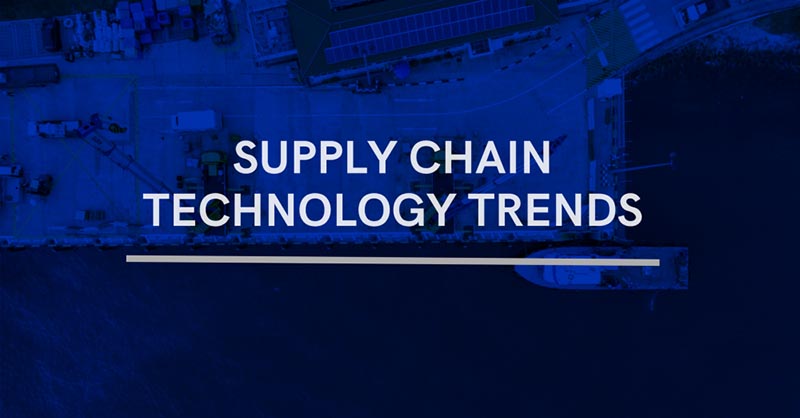5 Supply Chain Technology Trends
The supply chain and logistics aspect is important for any business involved in supplying raw materials, transportation and tracking of these goods and creating efficient and effective manufacturing processes. Companies using technological trends to their benefit will receive the competitive edge above other companies in terms of providing quality materials to their customers in an expeditious manner. This in turn will cause customers to gain faith and thus build better relationships which will eventually lead to a boost in revenue as you may gain more customers through a positive word of mouth referral.
Let’s take a look at some of these disruptive technologies that can give supply chain companies a competitive advantage over other companies:
- Advanced analytics: With advanced analytics, companies will be able to foresee future opportunities and eliminate the risk of errors happening. Through advanced analytics, logistics and transportation, supply chain sourcing and planning can all be monitored to improve future supply chain performance. Demands can be monitored using AI powered prescriptive and predictive analysis instead of relying on humans to check the trends.
- Using intelligent things: Autonomous vehicles and mobile robots will increase the efficiency of the processes taking place inside the warehouses. Intelligent things will help make processes a lot more hassle free and streamlined. As a result of this, humans will not be involved in repetitive, boring work as these will be taken over by the autonomous devices. Humans can be involved in more productive activity that requires thinking and decision making.
- Robotic Process Automation (RPA): RPA will lead to an elimination of key problems, reduce costs and even speed up the processes. Again, with the use of RPA, repetitive tasks can be taken over and done in a smoother and efficient manner by robots. Thus, it will reduce the need to have humans working on these activities as it will be handed over to robots completely.
- Augmented and virtual reality: Using augmented and virtual reality can help improve the digital experiences of both the customers and the employees. As estimated by Gartner, AR is going to be used extensively in the next 5–10 years, whereas VR will become widespread in the coming 2–5 years. In fact, many industries have already adopted AR and VR strategies to enhance their processes. In logistics, AR and VR can be used in warehousing, for better visualization of products for customers and planning store layouts.
- Internet of Things (IoT): IoT is being adopted in certain areas of supply chain, however, it has still not been used as part of a complete supply chain process from the beginning until the end. IoT can be used in various ways within the supply chain industry such as in manufacturing, managing demands and services, sourcing and maintenance.
Also Read: 3 Trends Facing The Cold Chain Industry
Thus, these disruptive technologies can help ease out the processes taking place in a supply chain industry. In the coming years, to be successful in this industry, companies need to take the chance and incorporate these technologies into their business and reap its benefits.





